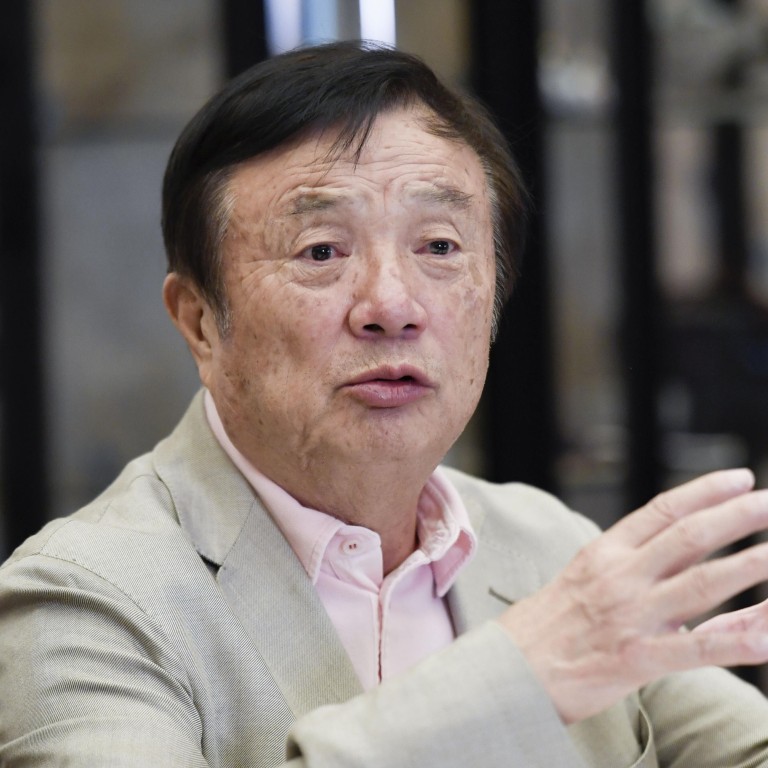
Huawei boss Ren Zhengfei says company has no plans to cut ties with US suppliers
- Chinese tech firm bought US$18.7 billion worth of parts from ‘our good friend’ the US last year, CEO and founder says
- China has to be realistic about its ability to move up the industrial supply chain and ‘can’t have too many illusions’, he says
In an interview with Dragon magazine, published by the Gansu Academy of Social Sciences, Ren Zhengfei, who is also chief executive of the world’s largest telecoms equipment supplier, said also that China should take a sober view of the challenges it faces in trying to change global industrial chains.
“We procured US$18.7 billion worth of parts from the US last year, a big increase from US$11 billion in the past. We are not thinking of replacing US components,” he said. “The US will always be our good friend.”
Richard Yu Chengdong, chief executive of the firm’s consumer business group, said on April 9 that Huawei had the option not to use US components in its smartphones but wanted to maintain good relationships with its American suppliers.
After being placed on the entity list in May last year, Huawei raced to develop or procure components that did not use American technology.
Three months later it launched HarmonyOS, a new operating system designed to run on all its devices, including smartphones, though it said at the time it preferred to continue using Google’s Android system.
“It would be OK if we didn’t use US components, but what happens if consumers don’t buy our products,” Ren said.
HarmonyOS was not developed to be a competitor to US alternatives but rather as a solution to being put on the entity list, Ren said.
“Huawei is a latecomer, so it would be very difficult to surpass the operating systems of Android and Apple. It might take a long period of time, but no more than 300 years,” he joked.
Huawei had “very friendly” relationships with Google and Apple, and their development of 5G smartphones was helpful, Ren said.
The cost alone would be prohibitive, he said, adding that China should optimise its business environment to maintain the attractiveness of its market while improving its industrial competitiveness.
“It would be a mistake for countries to move industrial chains back home, as the world economy is set up to develop through globalisation. Competitiveness evolves as part of globalisation,” he said.
“The massive middle- and low-end manufacturing sectors in China have been transferred to countries like Thailand and Vietnam, while the US’s hi-tech industry surpasses China’s.
“Chinese manufacturing is in the middle layer of the global industrial chain, and it is set to face difficulty [moving up], so we can’t have too many illusions,” he said.
The global health crisis had had a major impact on the production, sale and delivery of Huawei products, Ren said.
In an interview last month, he said Huawei would increase its research and development budget for 2020 by 33 per cent from last year to more than US$20 billion. The company launched its new P40 range of smartphones last month.

